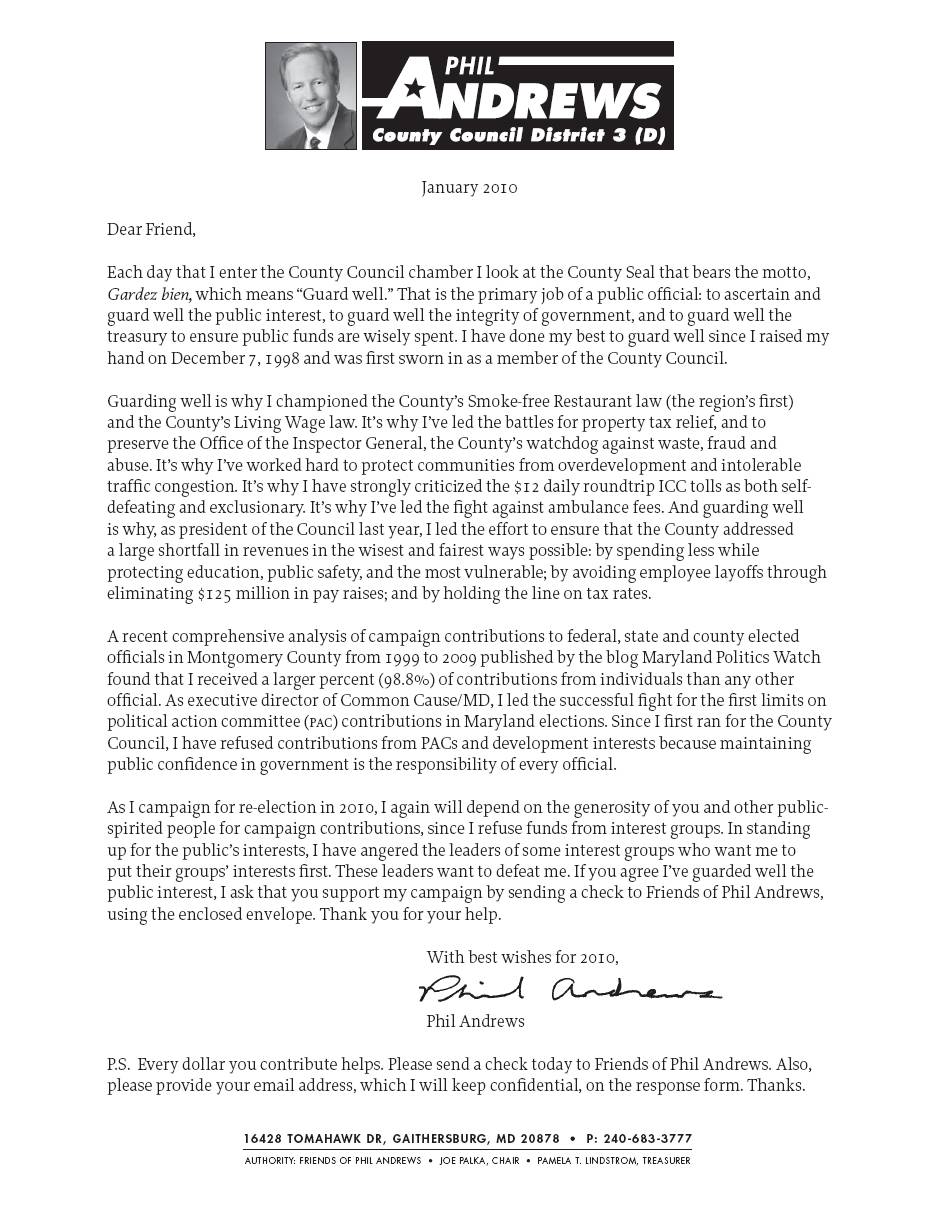By Adam Pagnucco.
Public financing of county elections is a growing trend in Maryland. Montgomery County was the first to adopt such a system in 2014 and has used it in 2018 and 2022. Public financing has since been used in Howard County in 2022 and has been approved for future elections in Anne Arundel County, Baltimore City, Baltimore County and Prince George’s County.
What should we make of public financing?
Let’s start with the father of public financing in Montgomery County: former Council Member Phil Andrews. Andrews was the executive director of Common Cause Maryland before he ran unsuccessfully for an at-large seat on the county council in 1994. He returned four years later to defeat District 3 incumbent Bill Hanna, the last time a Democratic district council member lost reelection. Hanna was supported by business interests while Andrews mounted an aggressive door-knocking campaign supported by progressive groups and unions. His first legislative crusade was his living wage bill for county contractor employees, a bill that took his entire first term to pass. He went on to become perhaps the council’s foremost proponent of responsible and honest government.

A mailer from Andrews’s 1994 campaign for council at-large.
The term “maverick” is overused in politics but it applies well to Andrews. He followed his own counsel, he often refrained from co-sponsoring bills and his vote could never be taken for granted. He always turned away contributions from developers and PACs even though he could have had much larger campaign war chests by accepting them. In 2002, the developer-financed End Gridlock slate tried to take him out and failed. Four years later, his former supporters in labor – who became dismayed by his growing fiscal conservatism – also tried to take him out and failed. Andrews’s political career ended in 2014, when he unsuccessfully ran against incumbent Ike Leggett for executive. He now works in the state’s attorney’s office.
Andrews followed a tough path to the dais. He was often outraised by opponents because of his unbroken vow to not take developer or PAC money. He made up for it by being the most energetic door-knocker in the county. That worked in his district races but it’s much harder to pull off in countywide elections.
In 2013, the General Assembly passed legislation allowing counties to establish public financing for elections and Andrews got his chance to establish his greatest legacy. When he designed Montgomery County’s public financing system the following year, I bet he was thinking of himself as a young candidate. How could candidates who lacked developer and/or union financing get enough money to be competitive without toeing the line of one or both?

Andrews discusses his record in a 2010 campaign letter.
The system that Andrews designed has been tweaked by the county council over the last decade but survives in its fundamental form. It has been substantially copied by several other Maryland jurisdictions. It consists of the following basic elements.
- The system is voluntary. Candidates don’t have to participate.
- Participating candidates may only accept contributions from individuals. (Exceptions include rebates from vendors, refunded security deposits and interest on bank accounts.) They may self-finance up to $12,000 (including money from a spouse). The original contribution limit was $150. It was raised to $250 in the 2022 election and now totals $500 aggregate in a four year cycle.
- Candidates must reach certain thresholds of number of contributors and dollars raised to qualify for public matching funds. Those thresholds are highest for county executive races and lowest for district council races. Only contributions from residents of the county qualify for the thresholds and for receiving matching funds.
- The matching funds are disbursed on a sliding scale with the first $50 of an individual contribution getting the highest match rate, the second $50 getting a lower match rate and the third $50 getting the lowest match.
- Matching fund disbursements are capped at $870,170 for executive candidates, $290,060 for council at-large candidates and $145,030 for district council candidates for both the primary and the general. Candidates can continue to collect as many individual contributions as they can get regardless of whether they hit the matching funds cap.
There are lots of other details but those are the main features. Andrews’s system is designed to not give publicly financed candidates the most money in their races but rather enough money to get their message out. It encourages direct engagement with large numbers of voters – especially ones who live in the county. It’s explicitly designed to increase political competition, particularly from people who would not otherwise run. I knew that latter goal was being met in 2018 when I met several candidates early on who told me something resembling the following:
Without public financing, I wouldn’t be running. I don’t know any developers, I have no connections to unions and I’m not independently wealthy. But I can knock on doors and talk to people all day long. With this system, I have a chance to win.
With two elections allowing public financing in the books, it’s time to take stock of the system by the numbers. What has been Montgomery County’s experience with the system? And what are the implications for other counties who are now adopting it? We shall start our analysis in Part Two.
